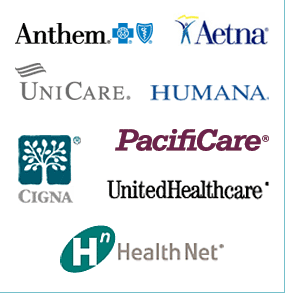
Other types of health insurance (non-medical)
While the term "health insurance" is most commonly used by the public to describe coverage for medical expenses, the insurance industry uses the term more broadly to include other related forms of coverage, such as disability income and long-term care insurance.
Disability income insurance
Main article: Disability insurance
Disability income (DI) insurance pays benefits to individuals who lose their ability to work due to injury or illness. DI insurance replaces income lost while the policyholder is unable to work during a period of disability (in contrast to medical expense insurance, which pays for the cost of medical care).For most working age adults, the risk of disability is greater than the risk of premature death, and the resulting reduction in lifetime earnings can be significant. Private disability insurance is sold on both a group and an individual basis. Policies may be designed to cover long-term disabilities (LTD coverage) or short-term disabilities (STD coverage).Business owners can also purchase disability overhead insurance to cover the overhead expenses of their business while they are unable to work.
A basic level of disability income protection is provided through the Social Security Disability Insurance (SSDI) program for qualified workers who are totally and permanently disabled (the worker is incapable of engaging in any "substantial gainful work" and the disability is expected to last at least 12 months or result in death).
Long-term care insurance
Main article: Long term care insurance
Long-term care (LTC) insurance reimburses the policyholder for the cost of long-term or custodial care services designed to minimize or compensate for the loss of functioning due to age, disability or chronic illness. LTC has many surface similarities to long-term disability insurance. There are at least two fundamental differences, however. LTC policies cover the cost of certain types of chronic care, while long-term-disability policies replace income lost while the policyholder is unable to work. For LTC, the event triggering benefits is the need for chronic care, while the triggering event for disability insurance is the inability to work.
Private LTC insurance is growing in popularity in the US. Premiums have remained relatively stable in recent years. However, the coverage is quite expensive, especially when consumers wait until retirement age to purchase it. The average age of new purchasers was 61 in 2005, and has been dropping.
Supplemental coverage
Private insurers offer a variety of supplemental coverages in both the group and individual markets. These are not designed to provide the primary source of medical or disability protection for an individual, but can assist with unexpected expenses and provide additional peace of mind for insureds. Supplemental coverages include Medicare supplement insurance, hospital indemnity insurance, dental insurance, vision insurance, accidental death and dismemberment insurance and specified disease insurance.
Supplemental coverages are intended to:
Supplement a primary medical expense plan by paying for expenses that are excluded or subject to the primary plan's cost-sharing requirements (e.g., co-payments, deductibles, etc.);
Cover related expenses such as dental or vision care;
Assist with additional expenses that may be associated with a serious illness or injury.
Medicare Supplement Coverage (Medigap)
Main article: Medigap
Medicare Supplement policies are designed to cover expenses not covered (or only partially covered) by the "original Medicare" (Parts A & B) fee-for-service benefits. They are only available to individuals enrolled in Medicare Parts A & B. Medigap plans may be purchased on a guaranteed issue basis (no health questions asked) during a six-month open enrollment period when an individual first becomes eligible for Medicare. The benefits offered by Medigap plans are standardized.
Hospital indemnity insurance
Hospital indemnity insurance provides a fixed daily, weekly or monthly benefit while the insured is confined in a hospital. The payment is not dependent on actual hospital charges, and is most commonly expressed as a flat dollar amount. Hospital indemnity benefits are paid in addition to any other benefits that may be available, and are typically used to pay out-of-pocket and non-covered expenses associated with the primary medical plan, and to help with additional expenses (e.g., child care) incurred while in the hospital.
Scheduled health insurance plans
Scheduled health insurance plans are an expanded form of Hospital Indemnity plans. In recent years, these plans have taken the name mini-med plans or association plans. These plans may provide benefits for hospitalization, surgical, and physician services. However, they are not meant to replace a traditional comprehensive health insurance plan. Scheduled health insurance plans are more of a basic policy providing access to day-to-day health care such as going to the doctor or getting a prescription drug, but these benefits will be limited and are not meant to be effective for catastrophic events. Payments are based upon the plan's "schedule of benefits" and are usually paid directly to the service provider. These plans cost much less than comprehensive health insurance. Annual benefit maximums for a typical scheduled health insurance plan may range from $1,000 to $25,000.
Dental insurance
Main article: Dental insurance
Dental insurance helps pay for the cost of necessary dental care. Few medical expense plans include coverage for dental expenses. About 97% of dental benefits in the United States is provided through separate policies from carriers—both stand-alone and medical affiliates—that specialize in this coverage. Discount dental programs are also available. These do not constitute insurance, but provide participants with access to discounted fees for dental work.
Vision care insurance
Main article: Vision insurance
Vision care insurance provides coverage for routine eye care and is typically written to complement other medical benefits. Vision benefits are designed to encourage routine eye examinations and ensure that appropriate treatment is provided.
Specified disease
Main article: Critical illness insurance
Specified disease provides benefits for one or more specifically identified conditions. Benefits can be used to fill gaps in a primary medical plan, such as co-payments and deductibles, or to assist with additional expenses such as transportation and child care costs.
Accidental Death and Dismemberment (AD&D) insurance
Main article: Accidental death and dismemberment insurance
AD&D insurance is offered by group insurers and provides benefits in the event of accidental death. It also provides benefits for certain specified types of bodily injuries (e.g., loss of a limb or loss of sight) when they are the direct result of an accident.





































